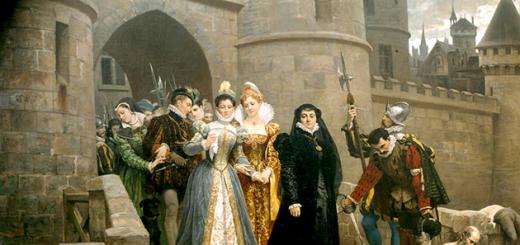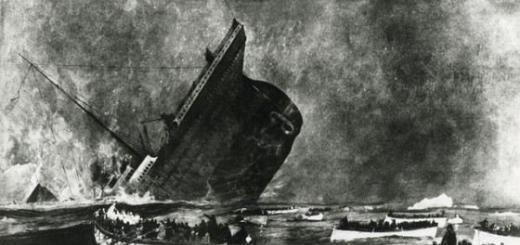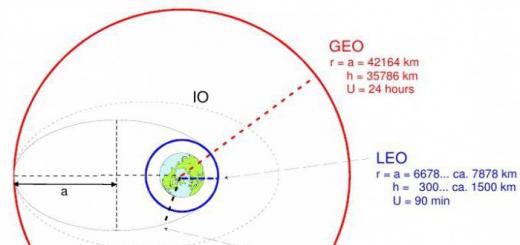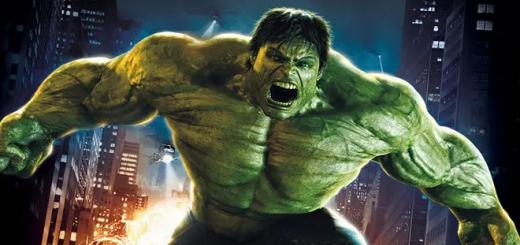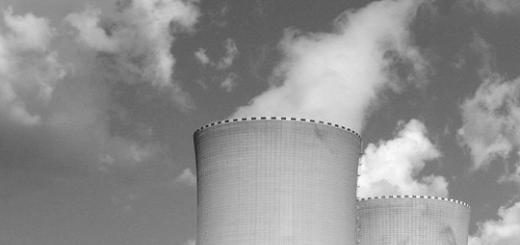Peter I Alekseevich is the last Tsar of All Russia and the first All-Russian Emperor, one of the most prominent rulers of the Russian Empire. He was a true patriot of his state and did everything possible for its prosperity.
From his youth, Peter I showed great interest in different things, and was the first of the Russian tsars who made a long journey through the countries of Europe.
Thanks to this, he was able to accumulate a wealth of experience and carry out many important reforms that determined the direction of development in the 18th century.
In this article, we will examine in detail the features of Peter the Great, and pay attention to the features of his personality, as well as success in the political arena.
Biography of Peter 1
Peter 1 Alekseevich Romanov was born on May 30, 1672 in. His father, Alexei Mikhailovich, was the Tsar of the Russian Empire, and ruled it for 31 years.
Mother, Natalya Kirillovna Naryshkina, was the daughter of a small estate nobleman. Interestingly, Peter was the 14th son of his father and the first of his mother.
Childhood and youth of Peter I
When the future emperor was 4 years old, his father Alexei Mikhailovich died, and Peter's older brother, Fedor 3 Alekseevich, was on the throne.
The new king took up the education of little Peter, ordering him to be taught various sciences. Since at that time there was a struggle against foreign influence, his teachers were Russian clerks who did not have deep knowledge.
As a result, the boy failed to receive a proper education, and until the end of his days he wrote with errors.
However, it is worth noting that Peter I managed to compensate for the shortcomings of basic education with rich practical exercises. Moreover, the biography of Peter I is notable precisely for his fantastic practice, and not for theory.
History of Peter 1
Six years later, Fedor 3 died, and his son Ivan was to ascend the Russian throne. However, the legitimate heir turned out to be a very sickly and weak child.
Taking advantage of this, the Naryshkin family, in fact, organized a coup. Enlisting the support of Patriarch Joachim, the Naryshkins made young Peter the Tsar the very next day.
 26-year-old Peter I. Kneller's portrait was presented by Peter in 1698 to the English king
26-year-old Peter I. Kneller's portrait was presented by Peter in 1698 to the English king However, the Miloslavskys, relatives of Tsarevich Ivan, declared the illegality of such a transfer of power and the infringement of their own rights.
As a result, in 1682, the famous Streltsy rebellion took place, as a result of which 2 tsars, Ivan and Peter, were on the throne at the same time.
From that moment on, many significant events took place in the biography of the young autocrat.
It is worth emphasizing here that from an early age the boy was fond of military affairs. By his order, fortifications were built, and real military equipment was involved in staged battles.
Peter 1 put on uniforms for his peers and marched along the city streets with them. Interestingly, he himself acted as a drummer, walking ahead of his regiment.
After the formation of his own artillery, the king created a small "fleet". Even then, he wanted to dominate the sea and lead his ships into battle.
Tsar Peter 1
As a teenager, Peter 1 could not yet fully manage the state, so his half-sister Sofya Alekseevna, and then his mother Natalya Naryshkina, served as regent under him.
In 1689, Tsar Ivan officially transferred all power to his brother, as a result of which Peter 1 became the only full-fledged head of state.

After the death of his mother, his relatives Naryshkins helped him manage the empire. However, soon the autocrat freed himself from their influence and began to independently rule the empire.
The reign of Peter 1
Since that time, Peter 1 stopped playing war games, and instead began to develop real plans for future military campaigns. He continued to wage war in the Crimea against, and also repeatedly organized the Azov campaigns.
As a result, he managed to take the fortress of Azov, which was one of the first military successes in his biography. Then Peter 1 took up the construction of the port of Taganrog, although the state, as such, still did not have a fleet.
From that time on, the emperor set out to create a strong fleet at all costs in order to have influence on the sea. To do this, he made sure that young nobles could learn ship craft in European countries.
It is worth noting that Peter I himself also learned to build ships, working as an ordinary carpenter. As a result, he gained great respect among ordinary people who watched him work for the good of Russia.
Even then, Peter the Great saw many shortcomings in state system and was preparing for serious reforms that would forever inscribe his name in.
He studied the state structure of the largest European countries, trying to learn from them all the best.
During this period of biography, a conspiracy was drawn up against Peter 1, as a result of which a streltsy uprising was to occur. However, the king managed to suppress the rebellion in time and punish all the conspirators.
After a long confrontation with the Ottoman Empire, Peter the Great decided to sign a peace agreement with it. After that, he started a war with.
He managed to capture several fortresses at the mouth of the Neva River, on which the glorious city of Peter the Great will be built in the future -.
Wars of Peter the Great
After a series of successful military campaigns, Peter 1 managed to open an exit to, which would later be called a "window to Europe."
Meanwhile, the military power of the Russian Empire was constantly growing, and the fame of Peter the Great was carried throughout Europe. Soon, the Eastern Baltic was annexed to Russia.

In 1709, the famous took place, in which the Swedish and Russian armies fought. As a result, the Swedes were completely defeated, and the remnants of the troops were taken prisoner.
By the way, this battle was beautifully described in the famous poem "Poltava". Here is a snippet:
It was that troubled time
When Russia is young
Straining strength in the struggles,
Husband with the genius of Peter.
It is worth noting that Peter 1 himself participated in the battles, showing courage and courage in battle. By his example, he inspired the Russian army, which was ready to fight for the emperor to the last drop of blood.
Studying Peter's relationship with the soldiers, one cannot fail to recall the famous story about the negligent soldier. More about it.
An interesting fact is that at the height of the Battle of Poltava, an enemy bullet shot through Peter I's hat, passing a few centimeters from his head. This once again proved the fact that the autocrat was not afraid to risk his life for the sake of defeating the enemy.
However, numerous military campaigns not only took the lives of valiant warriors, but also depleted the military resources of the country. It got to the point where Russian empire found herself in a situation where it was required to fight simultaneously on 3 fronts.
This forced Peter 1 to reconsider his views on foreign policy and make some important decisions.
He signed a peace agreement with the Turks, agreeing to give them back the fortress of Azov. Having made such a sacrifice, he was able to save many human lives and military equipment.
Some time later, Peter the Great began to organize campaigns to the east. Their result was the accession to Russia of such cities as Semipalatinsk and.

Interestingly, he even wanted to organize military expeditions to North America and India, but these plans never came true.
But Peter the Great was able to brilliantly conduct the Caspian campaign against Persia, having conquered Derbent, Astrabad and many fortresses.
After his death, most of the conquered territories were lost, since their maintenance was not beneficial for the state.
Reforms of Peter 1
Throughout his biography, Peter 1 implemented many reforms aimed at the benefit of the state. Interestingly, he became the first Russian ruler to call himself emperor.
The most important reforms in terms of significance concerned military affairs. In addition, it was during the reign of Peter 1 that the church began to obey the state, which had never happened before.

The reforms of Peter the Great contributed to the development and trade, as well as the departure from the outdated way of life.
For example, he taxed the wearing of a beard, wanting to impose European standards on the boyars. appearance. And although this caused a wave of discontent on the part of the Russian nobility, they nevertheless obeyed all his decrees.
Every year, medical, maritime, engineering and other schools were opened in the country, in which not only the children of officials, but also ordinary peasants could study. Peter 1 introduced a new Julian calendar, which is still used today.
While in Europe, the tsar saw many beautiful paintings that struck his imagination. As a result, upon arrival in his homeland, he began to provide financial support to artists in order to stimulate the development of Russian culture.
In fairness, it must be said that Peter 1 was often criticized for the violent method of implementing these reforms. In fact, he forcibly forced people to change their thinking, as well as to carry out the projects he had conceived.
One of the most striking examples of this is the construction of St. Petersburg, which was carried out in the most difficult conditions. Many people could not stand such loads and ran away.
Then the families of the fugitives were imprisoned and stayed there until the perpetrators returned back to the construction site.
 Peter I
Peter I Soon Peter 1 formed an organ of political investigation and court, which was transformed into the Secret Chancellery. Any person was forbidden to write in closed rooms.
If anyone knew about such a violation and did not report it to the king, he was subjected to death penalty. Using such harsh methods, Peter tried to fight against anti-government conspiracies.
Personal life of Peter 1
In his youth, Peter 1 liked to be in the German Quarter, enjoying foreign society. It was there that he first saw the German Anna Mons, with whom he immediately fell in love.
The mother was against his relationship with the German, so she insisted that he marry Evdokia Lopukhina. An interesting fact is that Peter did not argue with his mother, and married Lopukhina.
Of course, in this forced marriage family life could not be called happy. They had two boys: Alexei and Alexander, the last of whom died in early childhood.
Alexei was to become the legitimate heir to the throne after Peter the Great. However, due to the fact that Evdokia tried to overthrow her husband from the throne and transfer power to her son, everything turned out completely differently.
Lopukhina was imprisoned in a monastery, and Alexei had to flee abroad. It is worth noting that Alexei himself never approved of his father's reforms, and even called him a despot.
 Peter I interrogates Tsarevich Alexei. Ge N. N., 1871
Peter I interrogates Tsarevich Alexei. Ge N. N., 1871 In 1717, Alexei was found and arrested, and then sentenced to death for participating in a conspiracy. However, he died while still in prison, and under very mysterious circumstances.
Having dissolved the marriage with his wife, in 1703 Peter the Great became interested in the 19-year-old Katerina (nee Marta Samuilovna Skavronskaya). A stormy romance began between them, which lasted for many years.
Over time, they got married, but even before marriage, she gave birth to daughters Anna (1708) and Elizabeth (1709) from the emperor. Elizabeth later became Empress (reigned 1741-1761)
Katerina was a very smart and insightful girl. She alone managed to calm the king with the help of kindness and patience when he had acute attacks of headache.
 Peter I with the sign of the Order of St. Andrew the First-Called on a blue St. Andrew's ribbon and a star on his chest. J.-M. Nattier, 1717
Peter I with the sign of the Order of St. Andrew the First-Called on a blue St. Andrew's ribbon and a star on his chest. J.-M. Nattier, 1717 Officially, they got married only in 1712. After that, they had 9 more children, most of whom died at an early age.
Peter the Great truly loved Katerina. In her honor, the Order of St. Catherine was established and a city in the Urals was named. The Catherine Palace in Tsarskoye Selo (built under her daughter Elizabeth Petrovna) also bears the name of Catherine I.
Soon, another woman, Maria Cantemir, appeared in the biography of Peter 1, who remained the favorite of the emperor until the end of his life.
It is worth noting that Peter the Great was very tall - 203 cm. At that time, he was considered a real giant, and was head and shoulders above everyone else.
However, the size of his feet did not match his height at all. The autocrat wore shoes of size 39 and was very narrow in the shoulders. As an additional support, he always carried a cane with him, on which he could lean.
Death of Peter
Despite the fact that outwardly Peter 1 seemed to be a very strong and healthy person, in fact he suffered from migraine attacks throughout his life.
AT last years In his life, kidney stones also began to torment him, to which he tried not to pay attention.
At the beginning of 1725, the pains became so severe that he could no longer get out of bed. His health deteriorated every day, and the suffering became unbearable.
Peter 1 Alekseevich Romanov died on January 28, 1725 in winter palace. The official cause of his death was pneumonia.
 The Bronze Horseman - a monument to Peter I on the Senate Square in St. Petersburg
The Bronze Horseman - a monument to Peter I on the Senate Square in St. Petersburg However, an autopsy showed that death was due to inflammation of the bladder, which soon developed into gangrene.
Peter the Great was buried in the Peter and Paul Fortress in St. Petersburg, and his wife Catherine 1 became the heir to the Russian throne.
If you liked the biography of Peter 1 - share it on social networks. If you like biographies of great people in general, and in particular - subscribe to the site. It's always interesting with us!
Liked the post? Press any button.
Peter I, or Peter the Great (1672-1725), was one of the most outstanding rulers and reformers in Russian history. He was at first a joint ruler with his weak and sickly half-brother, Ivan V, and his sister, Sophia. In 1696 he became a sole ruler. Peter I was Tsar of Russia and became Emperor in 1721. As a child, he loved military games and enjoyed carpentry, blacksmithing and printing. He was first married at the age of 17.
Peter I is famous for carrying out a policy of "westernization" and drawing Russia further to the East that transformed Russia into a major European power. Having traveled much in Western Europe, Peter tried to carry western customs and habits to Russia. He introduced western technology and completely changed the Russian government, increasing the power of the monarch and reducing the power of the boyars and the church. He reorganized Russian army along Western lines.
He also transferred the capital to St. Petersburg, building the new capital to the pattern o/European cities.
In foreign policy, Peter dream of making Russia a maritime power. To get access to the Black Sea, the Caspian Sea, the Azov Sea and the Baltic, he waged wars with the Ottoman Empire (1695-1696), the Great Northern War with Sweden (1700-1721), and a war with Persia ( 1722-1723). He managed to get the shores of the Baltic and the Caspian Sea.
In his day, Peter I was regarded as a strong and brutal ruler. He faced much opposition to his reforms, but suppressed any and all rebellion against his power. The rebellion of streltsy, the old Russian army, took place in 1698 and was headed by his half-sister Sophia. The greatest civilian uprising of Peter's reign, the Bulavin Rebellion (1707-1709) started as a Cossack war. Both rebellions aimed at overthrowing Peter and were followed by repressions.
Peter I played a great part in Russian history. After his death, Russia was much more secure and progressive than it had been before his reign.
Translate the following sentences into English.
1. Peter the Great was one of the outstanding rulers and reformers in Russian history, who first ruled jointly with his half-brother and sister Sophia, then began to rule independently, and later became the emperor of Russia.
2. Peter I carried out a policy of "Westernization", tried to push Russia further to the East and introduced Western technology.
3. He turned Russia into a leading European power and tried to bring European customs and ways of life to Russia.
4. Peter I strengthened the power of the monarch, weakened the power of the boyars and the church, and reorganized the Russian army along Western lines.
5. He dreamed of turning Russia into a sea power and waged wars with the Ottoman Empire, Sweden and Persia.
6. He faced strong opposition to his reforms, but suppressed any rebellion against his power, and was considered a strong and cruel ruler in his day.
7. The largest civil uprising during Peter's reign was followed by repression.
1. Peter the Great was one of the outstanding rulers and reformers in Russian history, who first was a joint ruler with his half-brother Ivan V and his sister Sophia, then became a sole ruler, and later Emperor of Russia.
2. Peter I carried out a policy of"westernization", tried to draw Russia further to the East and introduced western technology.
3. He transformed Russia into a major European power and tried to carry western customs and habits to Russia.
4. Peter I increased the power of the monarch, reduced the power of the boyars and the church and reorganized Russian army along the Western lines.
5. He dreamed of making Russia a maritime power and waged wars with the Ottoman empire, Sweden and Persia.
6. He faced much opposition to his reforms, but suppressed any and all rebellion against his power, and he was regarded in his day as a strong and brutal ruler.
7. The greatest civilian uprising of Peter's reign was followed by repressions.
From the manual "USE. English. Oral topics" Zanina E.L. (2010, 272s.) - Part two. additional topics.
Peter I - the youngest son of Tsar Alexei Mikhailovich from his second marriage with Natalya Naryshkina - was born on May 30, 1672. As a child, Peter was educated at home, from a young age he knew German, then studied Dutch, English and French. With the help of palace masters (carpentry, turning, weapons, blacksmithing, etc.). The future emperor was physically strong, agile, inquisitive and capable, had a good memory.
In April 1682, Peter was enthroned after the death of a childless man, bypassing his older half-brother Ivan. However, the sister of Peter and Ivan - and relatives of the first wife of Alexei Mikhailovich - the Miloslavsky used the streltsy uprising in Moscow to palace coup. In May 1682, the supporters and relatives of the Naryshkins were killed or exiled, Ivan was declared the "senior" tsar, and Peter the "junior" tsar under the ruler Sophia.
Under Sophia, Peter lived in the village of Preobrazhensky near Moscow. Here, from his peers, Peter formed "amusing regiments" - the future imperial guard. In those same years, the prince met the son of the court groom Alexander Menshikov, who later became the "right hand" of the emperor.
In the second half of the 1680s, clashes began between Peter and Sofya Alekseevna, who were striving for autocracy. In August 1689, having received news that Sophia was preparing a palace coup, Peter hastily left Preobrazhensky for the Trinity-Sergius Monastery, where troops loyal to him and his supporters arrived. Armed detachments of nobles, gathered by the messengers of Peter I, surrounded Moscow, Sophia was removed from power and imprisoned in the Novodevichy Convent, her close associates were exiled or executed.
After the death of Ivan Alekseevich (1696), Peter I became an autocratic tsar.
Possessing a strong will, purposefulness and great capacity for work, Peter I throughout his life replenished his knowledge and skills in various fields, paying special attention to military and naval affairs. In 1689-1693, under the guidance of the Dutch master Timmerman and the Russian master Kartsev, Peter I learned to build ships on Lake Pereslavl. In 1697-1698, during his first trip abroad, he completed a full course in artillery sciences in Koenigsberg, worked as a carpenter at the shipyards of Amsterdam (Holland) for six months, studying ship architecture and drawing plans, and completed a theoretical course in shipbuilding in England.
By order of Peter I, books, instruments, weapons were purchased abroad, foreign craftsmen and scientists were invited. Peter I met with Leibniz, Newton and other scientists, in 1717 he was elected an honorary member of the Paris Academy of Sciences.
During the reign of Peter I carried out major reforms aimed at overcoming the backwardness of Russia from the advanced countries of the West. Transformations touched all spheres of public life. Peter I expanded the landlords' property rights over the property and personality of serfs, replaced the household taxation of peasants with poll tax, issued a decree on the possession of peasants, who were allowed to acquire the owners of manufactories, practiced the mass registration of state and yasak peasants to state and private factories, the mobilization of peasants and townspeople into the army and for the construction of cities, fortresses, canals, etc. The decree on single inheritance (1714) equalized estates and estates, giving their owners the right to transfer real estate to one of the sons, and thereby secured noble ownership of land. The Table of Ranks (1722) established the order of rank in the military and civil service not according to nobility, but according to personal abilities and merit.
Peter I contributed to the rise of the country's productive forces, encouraged the development of domestic manufactories, means of communication, domestic and foreign trade.
The reforms of the state apparatus under Peter I were an important step towards the transformation of the Russian autocracy of the 17th century into the bureaucratic-noble monarchy of the 18th century with its bureaucracy and service classes. The place of the Boyar Duma was taken by the Senate (1711), boards were established instead of orders (1718), the control apparatus was represented first by "fiscals" (1711), and then by prosecutors headed by the prosecutor general. Instead of the patriarchate, the Spiritual College, or Synod, was established, which was under the control of the government. Great importance had an administrative reform. In 1708-1709, instead of counties, voivodships and governorships, 8 (then 10) provinces headed by governors were established. In 1719, the provinces were divided into 47 provinces.
As a military leader, Peter I is among the most educated and talented builders of the armed forces, commanders and naval commanders of Russian and world history of the eighteenth century. His life's work was to strengthen military power Russia and increasing its role in the international arena. He had to continue the war with Turkey, which began in 1686, to wage a long-term struggle for Russia's access to the sea in the North and South. As a result of the Azov campaigns (1695-1696), Azov was occupied by Russian troops, and Russia fortified on the shores of the Sea of \u200b\u200bAzov. In the long Northern War (1700-1721), Russia under the leadership of Peter I achieved a complete victory, gained access to the Baltic Sea, which gave it the opportunity to establish direct ties with Western countries. After the Persian campaign (1722-1723), the western coast of the Caspian Sea with the cities of Derbent and Baku went to Russia.
Under Peter I, for the first time in the history of Russia, permanent diplomatic missions and consulates abroad were established, outdated forms of diplomatic relations and etiquette were abolished.
Major reforms were also carried out by Peter I in the field of culture and education. A secular school appeared, the monopoly of the clergy on education was eliminated. Peter I founded the Pushkar School (1699), the School of Mathematical and Navigational Sciences (1701), the Medical and Surgical School; the first Russian public theater was opened. In St. Petersburg, the Naval Academy (1715), engineering and artillery schools (1719), schools of translators at collegiums were established, the first Russian museum, the Kunstkamera (1719) with a public library, was opened. In 1700, a new calendar was introduced with the beginning of the year on January 1 (instead of September 1) and the reckoning from the "Christmas", and not from the "Creation of the World".
By order of Peter I, various expeditions were carried out, including Central Asia, on the Far East, to Siberia, laid the foundation for a systematic study of the country's geography and mapping.
Peter I was married twice: to Evdokia Feodorovna Lopukhina and to Marta Skavronskaya (later Empress Catherine I); had a son from his first marriage Alexei and from the second - daughters Anna and Elizabeth (besides them, 8 children of Peter I died in early childhood).
Peter I died in 1725 and was buried in the Peter and Paul Cathedral of the Peter and Paul Fortress in St. Petersburg.
The material was prepared on the basis of information from open sources
Translation and meaning of PETER THE FIRST in English and Russian
see suck off a dead mustang
Anglo- Russian-English dictionary slang, jargon, Russian names. English-Russian-English dictionary of slang, jargon and Russian names. 2012
- English-Russian-English vocabularies →
- English-Russian-English dictionary of slang, jargon and Russian names
More meanings of the word and translation of PETER THE FIRST from English into Russian in English-Russian dictionaries and from Russian into English in Russian-English dictionaries.
More meanings of this word and English-Russian, Russian-English translations for the word «PETER THE FIRST» in dictionaries.
- FIRST - adj. first, former; first, in the first place; first term, first term, first part (something to be added to); first…
Russian-English Dictionary of the Mathematical Sciences - Peter
- Peter
Russian-American English Dictionary - FIRST
Russian-American English Dictionary - FIRST
- FIRST - adj. 1. first, the first; ~th (day of the month) the first (day) of the month; ~January the first of january, …
- PETER - (Peter) husband. Peter
Russian-English Dictionary of General Subjects - Peter
Russian Learner's Dictionary - FIRST
Russian Learner's Dictionary - FIRST - first; (about a newspaper page) front; (of those mentioned above) former; (earliest) earliest January first, …
Russian-English dictionary - FIRST - first; (about a newspaper page) front; (of those mentioned above) former; (earliest) earliest January first, …
Russian-English Smirnitsky abbreviations dictionary - FIRST - adj. first, initial; top, prime; former; pioneer; virgin, maiden
Russian-English Edic - FIRST - adj. first; chief, main (main); earliest, pioneering (earliest); front (about the newspaper page) ; …
- PETER - (Peter) husband. Peter
Russian-English Concise Dictionary of General Vocabulary - FIRST - prime
Russian-English Dictionary of Construction and New Construction Technologies - PETER - Stone
British Russian-English Dictionary - FIRST
Russian-English Economic Dictionary - PETER
- PETER - (name) (from Greek) stone; old - Peter; derivatives - petra, petrya, petrunya, petrusya, parsley, parsley, petryai, petryanka, petryanya, petryata, petryakha, ...
English-Russian-English dictionary of slang, jargon, Russian names - FIRST - see Who got up first, that and slippers; see fart; see What to fart in a puddle; see tea, not...
English-Russian-English dictionary of slang, jargon, Russian names - FIRST - adj. 1. first, the first; ~th (day of the month) the first (day) of the month; ~January the first of january, new-year`s day; in …
Russian-English Dictionary - QD - FIRST - prime
Russian-English Law Dictionary - FIRST - see also. for the first time. Early investigators believed anauxite to be ... . A succession of pioneering storage-ring projects was built …
Russian-English Scientific and Technical Translator's Dictionary - PETER is one of the 12 apostles of Jesus Christ, called in the New Testament in different ways: Simon, Peter, Simon Peter or Cephas. A native of Bethsaida in ...
Russian Dictionary Colier - PETER is the name of a number of European kings and emperors. See also: PETER: EMPERORS PETER: KINGS
Russian Dictionary Colier - PETER - PETER Russia. Peter I the Great (1672-1725), son of Tsar Alexei I Mikhailovich, succeeded to the throne in 1682 after the death of his brother Fyodor III, ...
Russian Dictionary Colier - PETER - (1672-1725), Russian reformer tsar, during whose reign Russia stood among the great European powers. Born May 30 (June 9) 1672 ...
Russian Dictionary Colier - FIRST - see first; pilot first class; to carry out the first flights; see also for the first time The USA launched its …
Russian-English Dictionary of Space Idioms - FIRST - (of the two mentioned) the former
Russian-English Biological Dictionary - PETER is a husband. Peter Peter
- PETER is a husband. Peter Peter
Big Russian-English Dictionary - FIRST - adj. first chief, main (main) earliest (earliest) front (about the page of the newspaper) former (of those mentioned above) at first glance, with ...
Big Russian-English Dictionary - FIRST - first first
Russian-English Dictionary Socrates - EBEN, PETER - Petr Eben
Russian-American English Dictionary - CZECH, PETER - Petr Čech
Russian-American English Dictionary - FIRLEJ, PETER - Piotr Firlej
Russian-American English Dictionary - TENKRAT, PETER - Petr Tenkrát
Russian-American English Dictionary - SKURATOVICZ, PETER - Piotr Skuratowicz
Russian-American English Dictionary - Skarga, Pyotr - Piotr Skarga
Russian-American English Dictionary - SIKORA, PETER - Petr Sýkora
Russian-American English Dictionary - PRUHA, PETER - Petr Průcha
Russian-American English Dictionary - OZHAROVSKY, PETER - Piotr Ożarowski
Russian-American English Dictionary - LESOV, PETER - Petar Lesov
Russian-American English Dictionary - COOPER, PETER - Peter Cooper
Russian-American English Dictionary - ONE - 1. num. quantity 1) one (number 1) one book ≈ one book one million ≈ one million one half ≈ ...
- MAIDEN - 1. noun 1) a) maiden, maiden, girl Syn: maid b) joke. old maid 2) ist. kind of guillotine 3) horse, ...
Big English-Russian Dictionary - HANDSEL - 1. noun 1) a gift for happiness (especially for the New Year or the occasion of some. beginnings) It was the immemorial custom …
Big English-Russian Dictionary - FIRST - 1. num. order. first a) first in a row; next before everyone in order b) occupying a leading position, main, best first ...
Big English-Russian Dictionary - FACE - 1. n. 1) a) a person; face; face to look smb. in the face ≈ look to someone. in the eyes to powder ...
Big English-Russian Dictionary - CHARACTERISTICALLY - adv. typically, characteristically Peter characteristically discovers truths ≈ Peter, as is typical of him, reveals truths
Big English-Russian Dictionary - FIRST - 1. fɜ: st n 1. (the first) first (number) on the first of May - the first of May 2. first (person) (…
English-Russian-English Dictionary of General Vocabulary - Collection of the best dictionaries
Peter I, or Peter the Great (1672-1725), was one of the most outstanding rulers and reformers in Russian history. He was at first a joint ruler with his weak and sickly half-brother, Ivan V, and his sister, Sophia. In 1696 he became a sole ruler. Peter I was Tsar of Russia and became Emperor in 1721. As a child, he loved military games and enjoyed carpentry, blacksmithing and printing. He was first married at the age of 17.
Peter I is famous for carrying out a policy of "westernization" and drawing Russia further to the East that transformed Russia into a major European power. Having traveled much in Western Europe, Peter tried to carry western customs and habits to Russia. He introduced western technology and completely changed the Russian government, increasing the power of the monarch and reducing the power of the boyars and the church. He reorganized Russian army along Western lines.
He also transferred the capital to St. Petersburg, building the new capital to the pattern o/European cities.
In foreign policy, Peter dream of making Russia a maritime power. To get access to the Black Sea, the Caspian Sea, the Azov Sea and the Baltic, he waged wars with the Ottoman Empire (1695-1696), the Great Northern War with Sweden (1700-1721), and a war with Persia ( 1722-1723). He managed to get the shores of the Baltic and the Caspian Sea.
In his day, Peter I was regarded as a strong and brutal ruler. He faced much opposition to his reforms, but suppressed any and all rebellion against his power. The rebellion of streltsy, the old Russian army, took place in 1698 and was headed by his half-sister Sophia. The greatest civilian uprising of Peter's reign, the Bulavin Rebellion (1707-1709) started as a Cossack war. Both rebellions aimed at overthrowing Peter and were followed by repressions.
Peter I played a great part in Russian history. After his death, Russia was much more secure and progressive than it had been before his reign.

